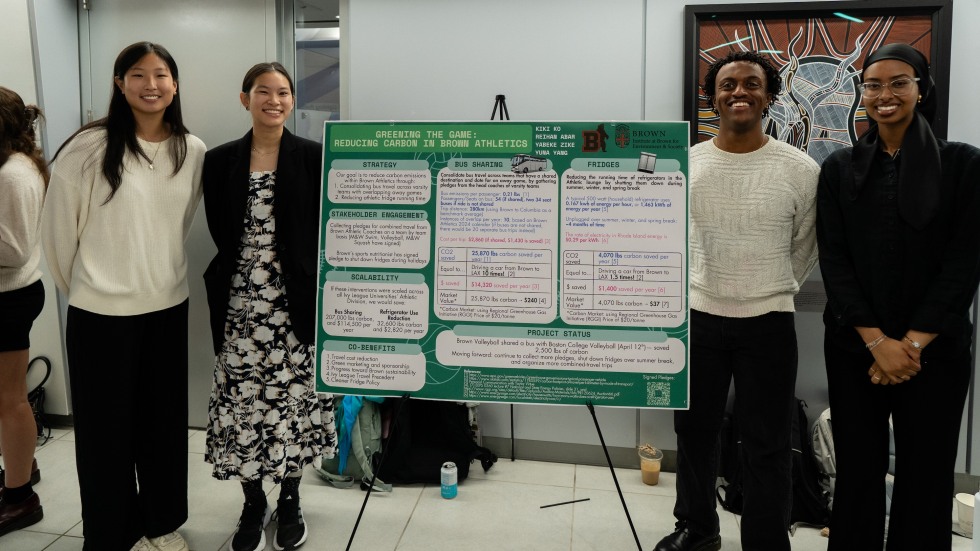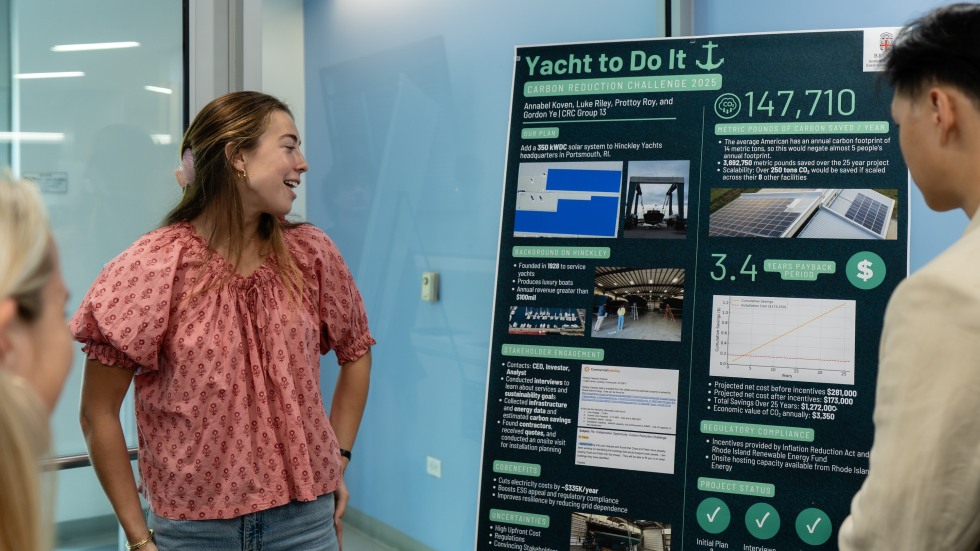How to solve the carbon challenge? Ask Brown students
Through a semester-long project, students in EEPS/ENVS 0360 partner with community stakeholders to implement carbon reduction strategies.
Students at Brown are no strangers to challenging courses. Still, being asked to find ways to directly help solve the climate crisis might seem too big a task.
Yet, the over 50 students taking EEPS/ENVS 0360: “Solving the Climate and the Carbon Challenge” came to their mid-semester presentations with many potential solutions.
Taught by Professors Kim Cobb and Emanuele Di Lorenzo, the class offers a “lifelong carbon literacy,” introducing students to the relationship between climate change and carbon emissions.
“This is another kind of literacy you’ll need in a carbon-constrained world, no matter where you are working and what you are doing on this planet,” Cobb said.

Kim Cobb (Lawrence and Barbara Margolis Director of IBES and Professor of Environment and Society & Earth, Environmental, and Planetary Sciences) and Emanuele Di Lorenzo (Professor Earth, Environmental, and Planetary Sciences and an IBES faculty affiliate).
In true Open Curriculum fashion, the course was designed to welcome students from any concentration. But what makes EEPS/ENVS 0360 truly stand out from other course offerings is its semester-long project, which asks students to develop a carbon reduction strategy and implement it in partnership with a community stakeholder.
“ A few individuals who are purposeful can find ways to enact scalable changes. ”
This semester, students’ proposed solutions ranged from LED lights to composting. One group, which partnered with a paralegal company, identified that almost 19 tons of carbon could be saved per year if the company reduced its graphics processing units’ operating hours from 24 to 12 hours. The change would also reduce the energy required to cool the system and extend machine life. According to the students, the company has already agreed to implement the strategy.
“There are limits to what’s possible, but what ends up being the takeaway is that it’s quite impressive what these students can accomplish,” Cobb said.
Other students turned their attention to reducing emissions at Brown. Some groups proposed strategies to reduce or offset University-funded flights. One group proposed a $10 fee on University-sponsored flights, which would be used to pay for carbon offsets. The shadow pricing scheme could help raise up to $24,000 per year to spend on carbon offsets. Other groups identified how emissions could be reduced if Brown were to invest in onsite composting or have athletic teams share buses when traveling for competitions.
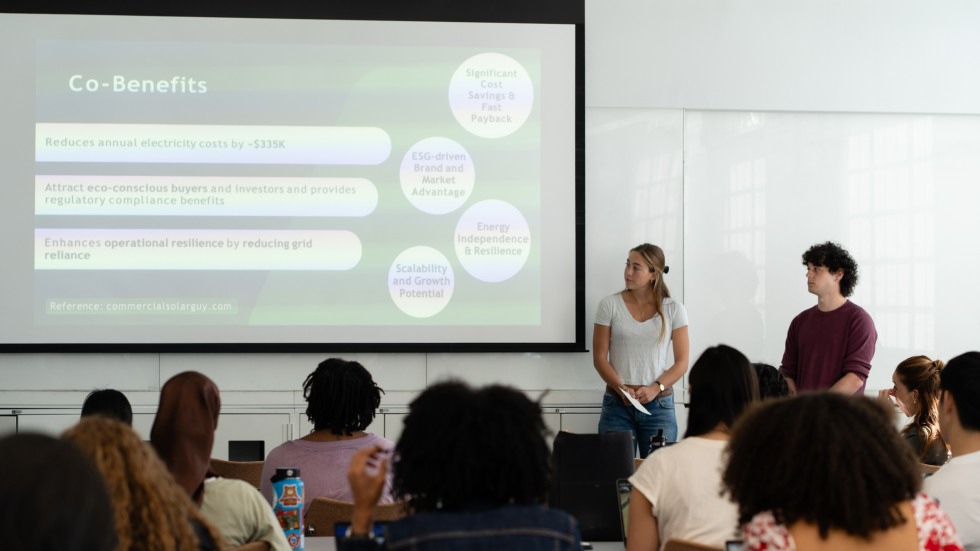
Ahead of their final poster session, student teams presented their ideas to each other in late April.
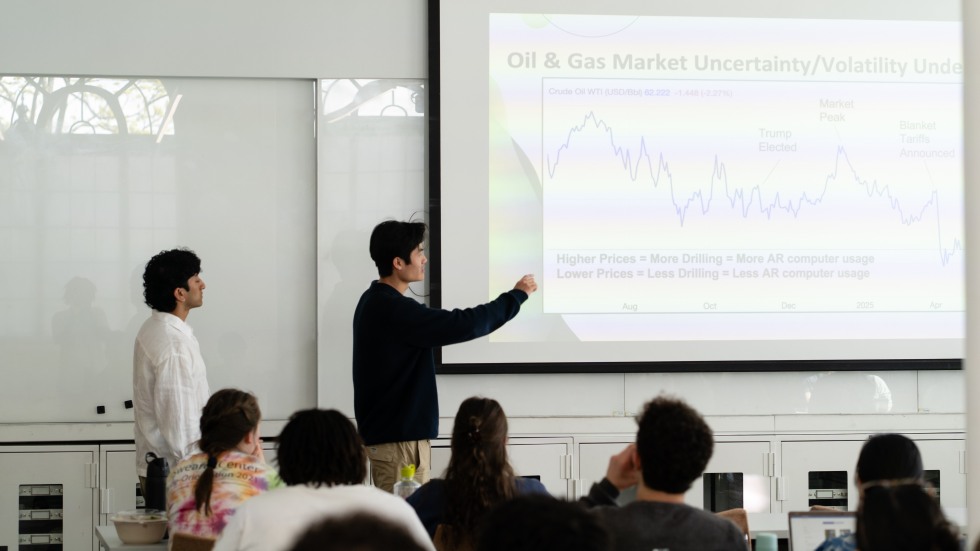
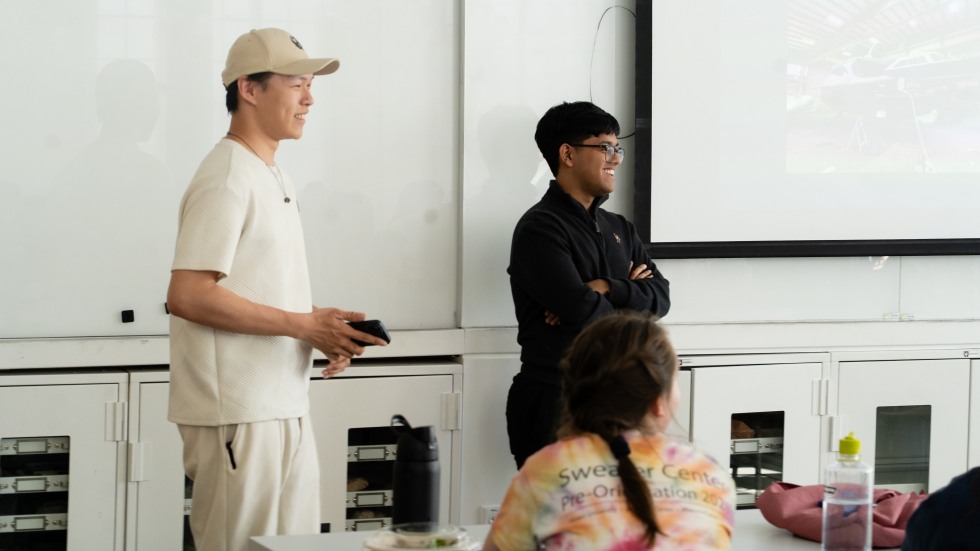
Senior Jenny Zhang ’25.5, an English concentrator focusing on environmental humanities, decided to take the class for its “practical approach” to addressing climate change. Her group is working on a project to implement “Meatless Mondays” in dining halls, a solution which could help Brown achieve its net-zero goals faster, they say.
Most of the solutions proposed required zero or low upfront costs from stakeholders, and many groups had already received positive pledges. “These things were hiding in plain sight,” Cobb said.
“ It’s been rewarding to work on something that's actually being applied in real life. ”
Environmental Sciences and Studies concentrator Alexa Theodoropoulos ’27 and her group spent the semester working with a Massachusetts construction company to attach Battery Energy Storage Systems to diesel-fueled generators on the job site. This strategy allows excess energy to be harnessed by the generator, which means it doesn’t need to run as much, decreasing the amount of fuel burned—and carbon emissions.
“It’s been rewarding to work on something that's actually being applied in real life,” Theodoropoulos said.
During their final poster session on May 14, students presented their expert findings, clearly explaining every component of their project to their peers.
“Students can see a way for their own personal skills to move the needle,” said Cobb. “A few individuals who are purposeful can find ways to enact scalable changes.”
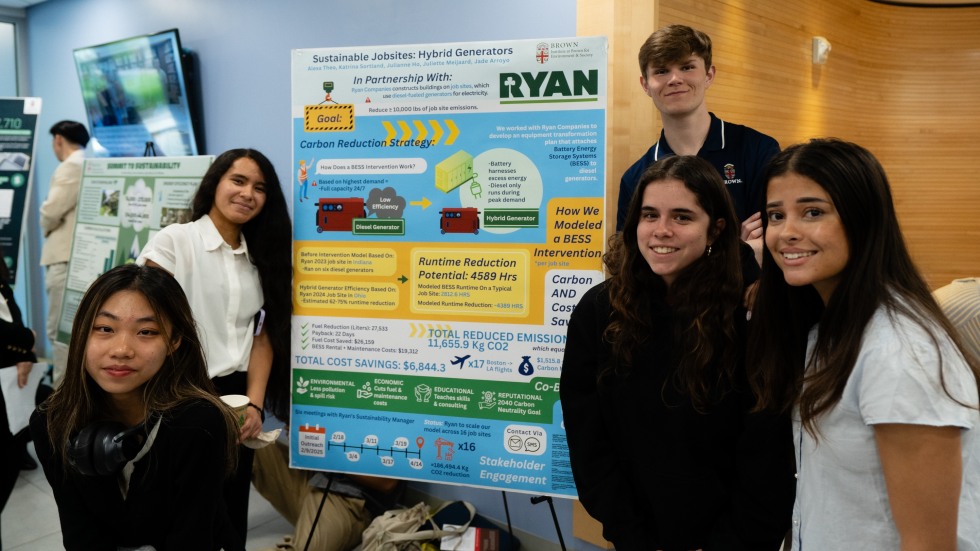
Undergraduates presented their semester-long research projects to the greater Brown community on May 14.
